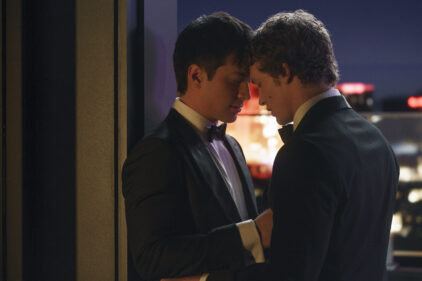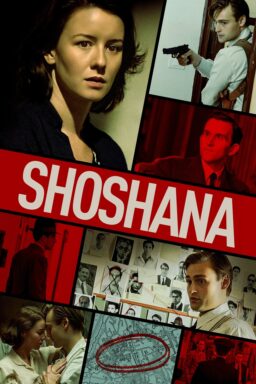I had an illuminating carpool to a wedding a couple of years back that hipped me to the behind-the-scenes popularity of Apple TV+’s “Ted Lasso.” I was listening to a friend who worked in Los Angeles on TV scripts talk about how the demand for stories had changed with the massive popularity of the congenial series. Studios were hungry for projects with that Ted Lasso effect; underdog stories with sun cracking through the crowds and a spirit to believe in.
Which all might explain why we now have a full FX on Hulu series based on “The Full Monty,” the 1997 congenial comedy directed by Peter Cattaneo about a group of out-of-work steelworkers from Sheffield putting on a nude show for one night only. Now, we get to see many of the men bear more of their day-to-day travails while the infrastructures for education and healthcare remain frustrating the same (as in, bad). It’s welcome that the series isn’t about them getting a nude show back together, but it’s the lack of rhythm that becomes a problem. “The Full Monty” got in and out at 90 minutes, aware that it worked in funny bits and pieces of observation. “The Full Monty” the series is what happens when there’s too much of a quaint thing—it turns into a bit of a slog.

The whole cast is back from the original, their various plot threads intertwining throughout the eight-episode season. Robert Carlyle is back as Gaz, though this time with a smiley update—he’s no longer the hollowed-out young man from the first movie who looked like he stumbled into a comedy. Instead, he’s a grinning saint of the underdogs, whether it’s helping a young graffiti artist named Ant (Arnold Oceng) or his bubbly grandson Ben (Louis Wheele), who is in a wheelchair. Reintroduced here lugging around an old mattress and trying to get it on the bus, Gaz is more of an ambassador for a place in which everyone’s gotten older, but nothing much has changed.
In its series form, “The Full Monty” gives us heartfelt but overlong and comedically underwhelming looks at the different lives of the Monty men and others in their orbit. Lomper (Steve Huison), who grieved his mother in the middle of the film, now runs a cafe where everyone hangs out called Big Baps with his husband Dennis (Paul Clayton). Meanwhile, Horse (Paul Barber) struggles to receive help from a broken healthcare system, which forces him into one absurd (but realistic) predicament after another. Speaking only selectively in the series, Gerald (Tom Wilkinson) offers some colorful commentary from the corner of Big Baps. (Lomper’s previous love interest Guy, played by Hugo Speer, appears in the series only briefly.)
The best overall plot line is given to the sensitive Dave (Mark Addy), now working as a caretaker at Sheffield Spires Academy. He takes a vulnerable troublemaker named Dean (Aiden Cook) under his wing, while his headmistress wife, Jean (Lesley Sharp), navigates financial shortages at the school, which forces her to cut down the music program led by her friend Hetty (Sophie Stanton). The world of Dave and Jean, which is falling apart for more than a couple reasons, becomes this show’s most promising reason to exist. We may not have been clamoring for more from “The Full Monty,” but at least the emotional work by Addy and Stanton helps the series have some standalone emotional charm.

With many episodes written by co-creators Simon Beaufoy and Alice Nutter, our heroes find themselves in mildly amusing situations, however contrived, like in the pilot when Gaz is suddenly under the control of a show-dog who was accidentally kidnapped by his joyriding daughter Dez (Talitha Wing) and her friend Cal (Dominic Sharkey). Gaz is called upon to do something ridiculous and dark with the dog. But it’s a happy and responsive dog as if it were a Monty member; it feels too much like a cute but not-that-clever device. The same goes for a belabored storyline involving an elusive prized pigeon with which Lomper tries to make a big payday.
This “Full Monty” wants to be its own beast, with narratives that continue the movie’s recognizable themes of dancing through the hardship and a tone that chases its music-driven montages with something far more serious (about half the episodes involve characters experiencing suicide ideation). But nearly every episode, I found myself checking the run-time to realize that I was only halfway through. Even an amusingly devised episode involving a hostage situation overstays its welcome, its dry wackiness not offering nearly enough of the charm it needs.
At least the series has a good sense to be visually striking, in non-flashy ways—it punches up the color whenever it can, as inside Big Baps. And like Cattaneo’s film, it knows the best visuals are inherent with the location, as it places many of its dialogue scenes on the hills of Sheffield, overlooking the skyline of a place that has always had its bittersweet nature. It’s as reliable an aesthetic as when the camera sometimes frames its longing characters in the third of the frame, emphasizing even more their isolation, and how destabilized they have become from their centering happiness.
It’s likely that “The Full Monty” the series will hit the spot for some, especially considering that “Ted Lasso” has ended and taken his “BELIEVE” sign with him. But while this “Full Monty” hardly inspires cynicism, it’s a sincere production that still struggles to assert itself as any more than fleeting comfort TV inspired by a far more memorable—and shorter—movie.
All of season one was screened for review. The entire first season of “The Full Monty” is now available on FX on Hulu.












